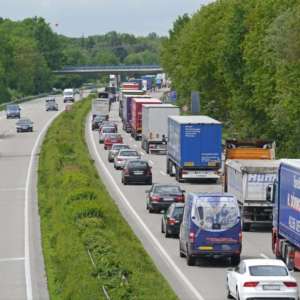This year, logistics professionals have noticed a resurgence of interest in intermodal shipping, the practice of moving containers across multiple forms of transport (rail, ship, and/or truck). Intermodal’s popularity subsided somewhat in 2015 and 2016, when excess capacity caused trucking prices to plummet. But as trucking rates rise in 2017, shippers are once again interested in exploring intermodal options. Looking ahead to the rest of the year and beyond, adding intermodal to the shipping mix might be a wise choice for many.
In years past, many shippers balked at the notion of intermodal shipping. The prospect of adding more steps before inventory arrived at its destination was unappealing, plus the inconsistent transit times that could vary up to 7 days made it difficult to manage forecasts, even when it made financial sense. But in the wake of the 2009 recession, shippers eager to save money helped create an intermodal boom, aided by the development of tracking technologies and logistics firms to help demystify the process. Since then, intermodal’s potential and ease of use has only grown. Increasingly sophisticated technology allows for containers to be packed with maximal efficiency, packing methods themselves have evolved to fit more inventory per square foot, and railroads have drastically improved their reliability to compete with trucking for speed of delivery. Less tangible benefits to intermodal include increased environmental friendliness, and a significantly reduced risk of lost or stolen goods offered by sealed shipping containers kept in constant motion.
Fringe benefits aside, the primary reason for the renewed interest in intermodal shipping is anxiety over the future of trucking. For the moment, the rail and truck industries are locked in a fierce pricing competition that is keeping rates low, but the stalemate may be coming to an end. Truck rates bottomed out in 2016, but have risen since the start of 2017, and are widely predicted to grow in the low single digits for the remainder of the year, pushed along by slowly increasing diesel prices and a wave of trucking mergers and closures that have decreased competition. The national driver shortage is also beginning to be felt in earnest, especially among long haul truckers (whose routes have the greatest potential to be replaced by rail). Other variables resist easy prediction, such as the impact of the ELD mandate, which is set to take effect in December. Experts are divided over whether the mandate will create a long-term capacity crisis, or merely a temporary pinch, but most observers agree that there is bound to be a rocky adjustment period, which could push rates up further.
Shippers are reacting to the uncertain climate in a variety of ways. JOC reports that many are eager to lock down trucking contracts before rate hikes take effect, and some shippers are even investing in dedicated fleets to ensure reliable service. But some logistics analysts advise taking the opposite approach: moving away from annual bids, and re-evaluating the intermodal-to-trucking mix every few months. That strategy might be prudent in the coming years, as the arrival of driverless trucks, mega-carriers, and even mega-containers promise to keep truck and rail prices dynamic.
The right solution for individual companies depends partially on size and location; businesses situated too far from intermodal hubs may pay more for drayage than they stand to save from rail. By the same token, switching from highway to intermodal demands a high degree of accuracy from shippers in anticipating both their volume and scheduling needs. Any disorganization on this front can lead to cargo sitting in terminals and racking up huge fees, which shippers should educate themselves about, and come up with rigorously-enforced best practices to guard against. Again, logistics professionals and time-saving technology can help achieve the efficiency necessary to reap the savings offered by intermodal shipping, but they are expenses that must be factored into your overall freight budget.
Give us a call (425-747-7914) if you want to review your current strategy against industry standards.



